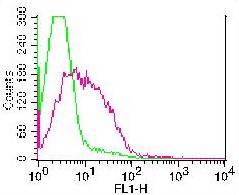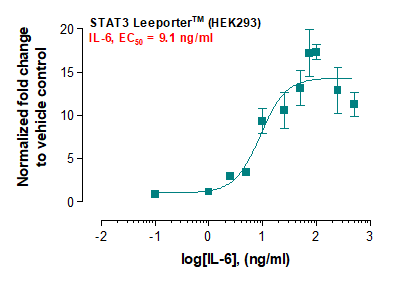Recombinant Mouse Hemopexin (C-6His)(Discontinued)
Shipping Info:
For estimated delivery dates, please contact us at [email protected]
| Amount : | 50 µg |
| Content : | Lyophilized from a 0.2 µm filtered solution of 20mM MES, 150mM NaCl, pH 5.5. |
| Storage condition : | Lyophilized protein should be stored at -20°C, though stable at room temperature for 3 weeks. Reconstituted protein solution can be stored at 4-7°C for 2-7 days. Aliquots of reconstituted samples are stable at -20°C for 3 months. |
| AA sequence : | SPLPTANGRVAEVENGTKPDSDVPEHCLDTWSFDAATMDHNGTMLFFKGEFVWRGHSGTRELISARWKNPITSVDAAFRGPDSVFLIKEDKVWVYPPEKKENGYPKLFQEEFPGIPYPPDAAVECHRGECQSEGVLFFQGNRKWFWDFATRTQKERSWSTVGNCTAALRWLERYYCFQGNKFLRFNPVTGEVPPRYPLDARDYFVSCPGRGHGRPRNGTAHGNSTHPMHSRCSPDPGLTALLSDHRGATYAFTGSHYWRLDSSRDGWHSWPIAHHWPQGPSTVDAAFSWDDKVYLIQGTQVYVFLTKGGNNLVSGYPKRLEKELGSPPGISLETIDAAFSCPGSSRLYVSSGRRLWWLDLKSGAQATWTEVSWPHEKVDGALCLDKSLGPNTCSSNGSSLYFIHGPNLYCYSSIDKLNAAKSLPQPQKVNSILGCSQHHHHHH |
Source: Human Cells.
MW :49.8kD.
Recombinant Mouse Hemopexin is produced by our expression system and the target gene encoding Ser24-Gln460 is expressed Hemopexin (HPX) is a 60 kDa plasma glycoprotein belongs to the family of the acute-phase proteins whose synthesis is induced after an inflammatory event. Hemopexin with two four-bladed beta -propeller folds has been found in other proteins including collagenases and provides sites for protein-protein interactions. The liver is the major synthesizing organ. Hemopexin participates in maintaining and recycling the iron pool by utilizing its high binding affinity toward heme composed of protoporphyrin IX and iron. It also functions in preventing oxidation caused by heme after hemolysis. Hydrophobic heme molecules can intercalate into lipid membranes and participate in the oxidation of lipid membrane components through the Fenton reaction resulting in lipid peroxidation. Hemopexin undergoes a conformational change upon the binding of heme. The conformational change allows hemopexin to interact with a specific receptor, forming a complex which is then internalized. Heme concentrations in plasma increase after hemolysis, which is associated with several pathological conditions such as reperfusion injury and ischemia.
MW :49.8kD.
Recombinant Mouse Hemopexin is produced by our expression system and the target gene encoding Ser24-Gln460 is expressed Hemopexin (HPX) is a 60 kDa plasma glycoprotein belongs to the family of the acute-phase proteins whose synthesis is induced after an inflammatory event. Hemopexin with two four-bladed beta -propeller folds has been found in other proteins including collagenases and provides sites for protein-protein interactions. The liver is the major synthesizing organ. Hemopexin participates in maintaining and recycling the iron pool by utilizing its high binding affinity toward heme composed of protoporphyrin IX and iron. It also functions in preventing oxidation caused by heme after hemolysis. Hydrophobic heme molecules can intercalate into lipid membranes and participate in the oxidation of lipid membrane components through the Fenton reaction resulting in lipid peroxidation. Hemopexin undergoes a conformational change upon the binding of heme. The conformational change allows hemopexin to interact with a specific receptor, forming a complex which is then internalized. Heme concentrations in plasma increase after hemolysis, which is associated with several pathological conditions such as reperfusion injury and ischemia.
Endotoxin : Less than 0.1 ng/µg (1 IEU/µg) as determined by LAL test.
For Research Use Only. Not for use in diagnostic/therapeutics procedures.
| Subcellular location: | Secreted |
| Tissue Specificity: | Expressed by the liver and secreted in plasma. |
| BioGrid: | 200414. 1 interactions. |
|
There are currently no product reviews
|
















.png)










